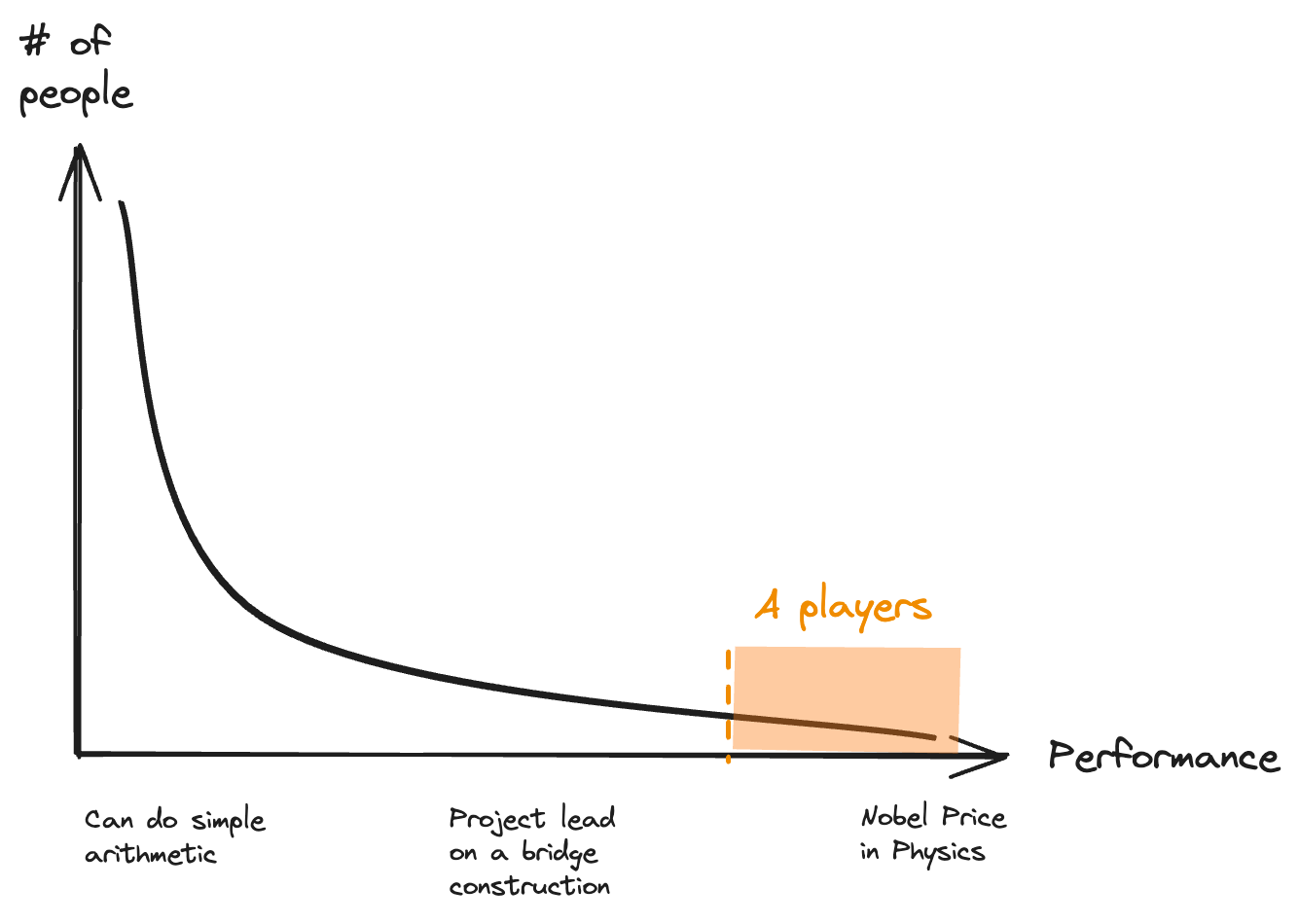Identifying A Players through Smart Deference

Aren’t we all dreaming of assembling a team where each member is not just competent but truly exceptional? ‘A players’ - top-tier talents who drive innovation and excellence - form the backbone of high-performing teams. However, identifying these individuals is challenging. This essay explores strategies to identify A players by leveraging smart deference, effectively narrowing the search space while reducing hiring mistakes.
Challenges in Identifying A Players
Recruiting A players might seem daunting at first. The primary challenges include:
- Large Search Space: A players make up only a small proportion of the total talent pool.
- Limited Resources: Time and money constraints limit the search.
- High Cost of Mistakes: Hiring mistakes, such as false positives, lead to high churn or team quality degradation, while false negatives waste valuable resources.
Smart Deference Strategies
To overcome these challenges, we can use proxies to narrow our search:
Proxy 1: The Top is Usually Highlighted
Paradoxically, it is probably easier to find an A* player than an A or B player. This is due to the power law distribution of talent and achievement, where the higher you get to the top of any field, the less crowded it usually becomes.
Action: Defer to the Top
- Identify the Top Contributors: Start by identifying the most important contributors in a field.
- Prioritize Effort: Only move to the next rank if no progress is made with the top candidates after considerable effort.
Proxy 2: A Players Surround Themselves with Other A Players
A players tend to associate with other A players. Identify one noed to tap into their network of excellence.
Action: Defer to Other A Players
- Identify a Key A Player: Find at least one person who exhibits the desired qualities, ideally someone you already know.
- Ask for References: Request references and build relationships with these individuals.
- Repeat the Process: Habitually ask, “Who is the most impressive person you know who does X, and why?” and seek introductions.
Proxy 3: A Players Work on Impressive Projects
A players are often involved in high-impact projects that exemplify the quality of work you seek.
Action: Defer to Impressive Projects
- Identify Exemplary Projects: Find projects that reflect the quality of work you desire.
- Contact Key Contributors: Reach out to the individuals responsible for these projects, such as first authors on scientific papers or engineering leads behind notable products.
- Leverage Your Network: Ask existing A players to help identify impressive projects.
Proxy 4: A Players are Entrepreneurial
Although entrepreneurial individuals exist in large organizations, they are often harder to identify due to internal hurdles. In contrast, their contributions are more visible in smaller companies.
Action: Defer to Small High-Performance Companies
- Identify Traction-Driven Startups or Nonprofits : Look for startups with traction, but avoid being swayed by hype.
- Reach Out to Key Players: Contact individuals working in these startups, usually less than 15 people.
To conclude, constrain your search space for A players by deferring to the top, other A players, impressive projects, and small high-performance companies. This strategy aims to reduce false positives, decreasing the pool of potential candidates while enhancing the efficiency and effectiveness of the hiring process.